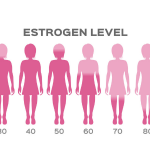My Gut Reaction
Joe Kellerstein, DC, ND
When we’re distressed about what reality is doing at the moment and we want to set about changing it, we have a problem … How do we change it?
Invariably, solving the problem requires that we look at the situation with a set of mental tools that restate the issue in terms we can manipulate. This is called the ‘paradigm’ of thought. Don’t for a moment think it equals reality. Paradigm is a convenient illusion, a caricature that highlights more the tools to crank things around rather than what fully is.
Modern medicine uses the chemical paradigm. It also uses the allopathic/antipathic paradigm.
Originally, naturopathy used a systems approach (Holism) based on various philosophies, including the chemical. Lately, we have settled into a kind of chemical-green allopathy.
Excuse me a moment. I think I am having a gut reaction.
Original (pre-Kentian) homeopathy is one of the most abandoned paradigms in our profession. In the Organon, Hahnemann states the homeopathic position. This paradigm is based on the sufferings of the patient. The raw language of suffering is taken to be a direct guide to the needed medicine. Chemistry is not excluded; it is just not primary. It seems to me this is more direct than first translating suffering into the latest chemical jargon, then finding a drug. We relate the pattern of suffering in the patient to the pattern of suffering in the prover. Unfortunately, this exquisitely simple method of practicing homeopathy is rarely taught these days.
Let’s look at a couple of cases.
Case 1: M.A.
Description: Male, 35-year-old factory worker; presents in May 2005. CC: Severe abdominal pain since January ’05. Soon after eating, there occurs a sudden umbilical pain, as if a stick were driven into the gut. Pain is followed by nausea, sweats and uncontrollable vomiting, especially of gelatinous blobs of various colors. With the sweats is intense fever felt in the hands and forehead. Diarrhea will follow. Stools are characterized by gelatinous blobs and even sheets of gelatinous mucous. So far, extensive ongoing medical tests and several drugs have failed to produce any conclusion or relief.
There is a history of severe headache, especially with change of season or barometric pressure.
At 25 years old, the patient suffered pneumonia, which left him feeling weak. He has not been quite himself since. He has been susceptible to sore throats. Since then, there has been a strong thirst for ice-cold water.
M.A. characterizes himself as sympathetic and caring. Presently, the patient has been off work for five weeks.
What we look for in a case is any symptom whose inclusion in a case core will narrow our choice of remedies – that is, give precision to selection. In this case:
- gelatinous stool
- heat in hands with perspiration
- headache before a storm
- desires ice-cold water.
These lead us to consider phosphorus. Prescription: phosphorus, 6c, once daily.
One week later, at the follow-up visit, the patient reported being asymptomatic within three days – no pain, no diarrhea, no mucus.
Case 2: V.S.
Description: Female, 50 years old; history of severe pancreatitis with hospitalization five years ago. As of two years ago, GERD. “Every time I lay down, acid comes up and really burns the throat. Sleeping is very difficult. The abdomen becomes very bloated, especially just under the ribs.” Bread and yogurt aggravate. It all has intensified recently and with it a mild latex allergy has escalated, showing skin reddening quickly on contact. This is worrisome. Stools have changed in color recently with intensification of the reflux. They seem paler, even white at times.
Physical examination was striking for distension in the hypochondrium. The most striking and consistent symptoms were:
- burning in the stomach extending to the throat
- acrid eructations
- light stools.
This patient was suffering constantly. Prescription: Carbo Veg. 30 bid. I referred the patient to her medical practitioner, feeling the need to assess for pancreatitis and biliary obstruction.
She returned 10 days later, reporting an absence of symptoms for more than a week, and normal stool color. She was still awaiting appointment for medical tests.
Hahnemann left us an approach that is simple, direct and quickly effective.
It’s not that I feel naturopaths should abandon the green allopathic approach. There is a place in the spectrum for all ideas. We as a profession have abandoned our roots. How about a second look at the treasures of these older paradigms?
 Dr. Kellerstein graduated as a chiropractor in 1980 and as a naturopath in 1984. He graduated with a specialty in homeopathy from the Canadian Academy for Homeopathy, and subsequently lectured there for two years. He also lectured in homeopathy for several years at the Canadian College of Naturopathic Medicine; for eight years at the Toronto School of Homeopathic Medicine; for two years at the British Institute for Homeopathy; and for the past five years, he has lectured for his own post-grad course in homeopathy, Homeopathy by the Book (homeopathybythebook.com). Kellerstein’s mission is the exploration of natural medicine in a holistic context, especially homeopathy and facilitating the experience of healing in clients.
Dr. Kellerstein graduated as a chiropractor in 1980 and as a naturopath in 1984. He graduated with a specialty in homeopathy from the Canadian Academy for Homeopathy, and subsequently lectured there for two years. He also lectured in homeopathy for several years at the Canadian College of Naturopathic Medicine; for eight years at the Toronto School of Homeopathic Medicine; for two years at the British Institute for Homeopathy; and for the past five years, he has lectured for his own post-grad course in homeopathy, Homeopathy by the Book (homeopathybythebook.com). Kellerstein’s mission is the exploration of natural medicine in a holistic context, especially homeopathy and facilitating the experience of healing in clients.










